Cayin C9 Portable Amplifier Review – Chasing Perfection
Pros — Great build quality
– Stellar bass control, slam, speed, and texture
– Transparent midrange and treble rendition without any coloration
– Channel separation is pretty much perfect
– Timbre switch (solid state/nuTube) is handy
– On-the-fly switching between class-A/AB
– Quick charge support, decent battery life, replaceable batteries
– Will replace most desktop units in this range for powering IEMs and dynamic driver headphones
Cons — Cayin C9 is rather heavy
– Very faint amp hiss with sensitive IEMs
– Gets warm in class-A mode after more than an hour of operation
– NuTubes don’t sound like classic tubes, tube purists may feel disappointed
– Won’t replace desktop setups if you’re running inefficient planar headphones
– Eye-watering price that gives you a pause before purchase
In this Article
INTRODUCTION
Cayin is no stranger to amps. In fact, they make some of the best desktop amps out there, including the venerable iHA-6 and the top-dog, the HA-6 (one of the best amps I’ve ever had the pleasure to listen to, by the by).
The Cayin C9 is their flagship portable amp, meant to be more transportable than portable given the ~0.5kg of weight.
Note: the ratings given will be subjective to the price tier. Cayin C9 was sent to me as part of the EU Review Tour (thanks Andy!)
IEMs/Headphones used: Dunu Zen/SA6, Final FI-BA-SS/E5000, UM MEST mk. 2, Campfire Audio Holocene, Sennheiser HD650, Hifiman Ananda
Price, while reviewed: $2000. Can be bought from Musicteck.
PHYSICAL THINGS AND USABILITY
PACKAGING AND ACCESSORIES
In terms of accessories, you get two high quality interconnect cables (a 4.4mm to 4.4mm balanced cable, and a 3.5mm to 3.5mm single-ended cable). You also get a type-C cable for charging (supporting QuickCharge), a screw-driver (for removing the battery bay), and some spare screws. That’s about it, no carrying case or anything. The accessories aren’t plentiful given the price-tag but you do get all the basic necessities.
3.5/5
BUILD QUALITY
Cayin C9 has a two part design: the front part has the amp circuit along with the controls/switches, and the back side has the battery bay which can be slid out. The top of the device is aluminium with CNC-cut windows (covered by glass) that houses the NuTubes, and the bottom of the device has a sheet of glass on it (I do wish this portion was also aluminium for consistencies’ sake). The tubes glow green when turned on and takes about 3/4 seconds to warm up.
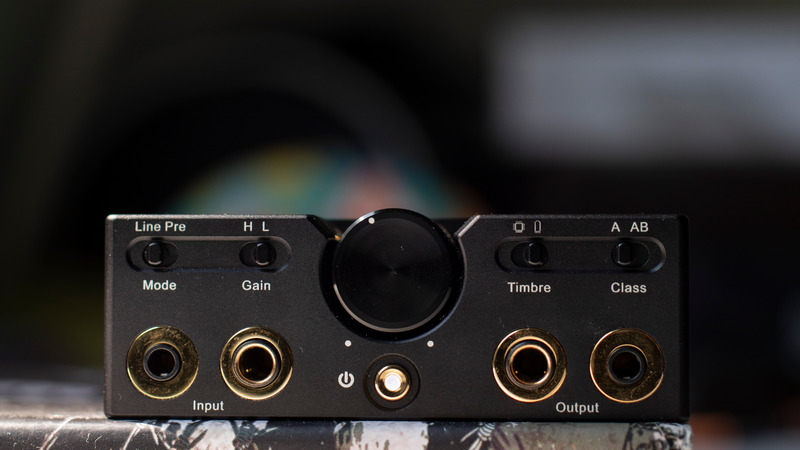
The front of the device has… everything. Well, everything bar the pre-amp/line-in toggle button (on the left side of the device, you need to press it along with selecting pre-amp input mode on the front panel to activate the mode) and the USB-C port/battery indicators (on the back of the device, with the battery bay). Both the 3.5mm and 4.4mm inputs/outputs are on the front, along with the power switch/operation indicator LED button. There are toggles for (from left to right) line-in/pre-amp input mode, gain (High/Low), Timbre (Solid state/Tube), operation mode (Class-A/AB).
Lastly , there is the volume knob which is an ALPS rotary encoder and has quite high precision from my experience with no channel imbalance even at extremely low volumes (it’s electronic and resistance-ladder based with 130 discrete steps). The knob takes some force to rotate though, and it’s somewhat recessed into the housing to prevent accidental volume changes (which can be damaging due to the extremely high output power on the C9).
I don’t really have any complaint about build quality here.
5/5
USABILITY
The Cayin C9 is more of a transportable than a portable device. In other words, they need to be stationed somewhere (a desk/bedside) and not really portable in a shirt/pant/coat pocket (unless you love unsightly bulges). Other than that, it’s quite easy to operate the device once stationed on a desk. Changing between modes is easy to do without looking once you get the layout memorized. However, due to all the controls being on the front, it can a pain to hook it up as a sole headphone amp with a desktop DAC (then you need to reach on the back to connect/disconnect headphones and IEMs). As of now it is more suited to connecting with DAPs than desk setups.
Another interesting aspect is that there is a slight delay every time you change modes. This is something you have to take into account for on-the-fly A/B comparison as the changes introduced by the tube mode, for example, won’t be instantaneous.
3.5/5
BATTERY
The Cayin C9 uses four 18650 Li-ion batteries and apparently switching batteries may bring subtle changes to the sound signature (I did not verify this). It supports quick charge so recharging is quite quick, and I managed ~8 hours on a single-charge in class-A/High gain mode from the balanced out. This is not a stellar showing but given the power and performance here it is within expectations. Do note that Cayin have built several protection mechanisms in the battery powered circuitry (and you cannot bypass battery power here, not sure why would you want to anyway since the battery power is better than direct AC input for this particular use-case). You can read more about the power delivery method here.
AMP ARCHITECTURE
The internal architecture of the Cayin C9 is fully discrete and fully balanced. Cayin also didn’t use a traditional IC/Op-amp based circuitry, rather opted for fully discrete design. The volume control is resistance-ladder based with 130 discrete steps.
Instead of trying to explain all the nitty-gritties in detail (which isn’t really my forte) I’d instead link to the Cayin head-fi thread (click here). There you will find amp schematics alongside a closer look at the internal components.
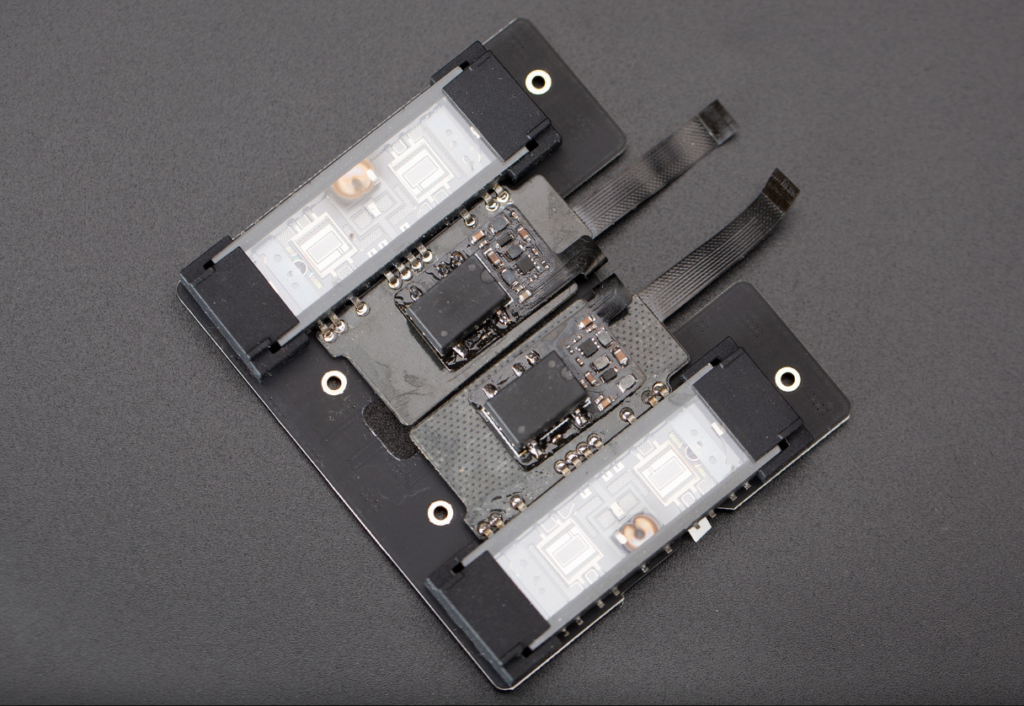
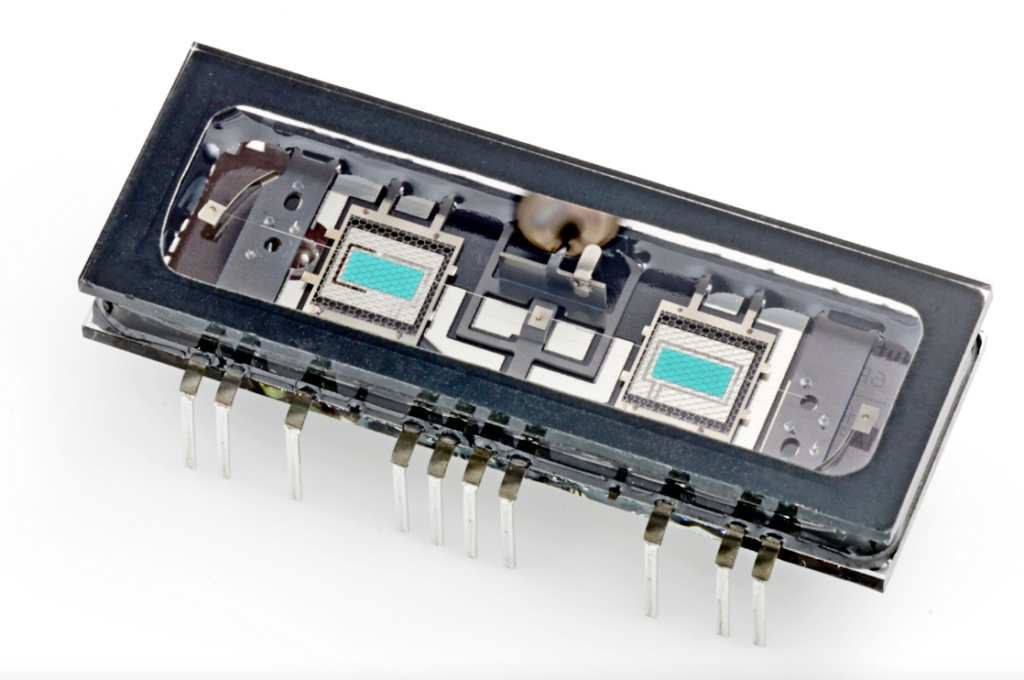
TONALITY AND TECHNICALITIES
The Cayin C9 is an absolute chameleon of an amp when it comes to tonality and technicalities. Between the class-A/AB mode and solid-state/tube timbre, you can have 4 different signatures, and this is quite helpful when it comes to pairing IEMs with a specific sound signature. Please note that due to the way the mode-switching works in this amp (has a 2-5 seconds delay depending on mode) some of the A/B comparisons below are based on auditory memory and listening notes. In other words: take them with some salt (though I am fairly convinced about the different bass reproduction in class-AB mode and the general characteristics of the tube mode).
CLASS-A (SOLID STATE)
This is my most favorite mode, and apart from very bass-heavy stuff I preferred almost everything in my collection in this mode.
The best part about the class-A mode is the bass rendition. This is, by far, the best bass reproduction I’ve heard on a portable amp. The sheer grunt of the sub-bass (provided you have a suitably extended IEM) is unmatched. No DAP I’ve tried till date including the likes of Lotoo PAW Gold Touch, Sony WM1Z, Questyle QP1R, or the A&K SE200 could come close. I went through a huge portion of my library to simply enjoy the basslines in a completely different manner.
The sheer control Cayin C9 has over the sub and mid-bass is also uncanny. Snare hits are authoritative, sub-bass rumble is very much present, but it doesn’t overwhelm and actually corrects the bass-bleed issue in certain IEMs (Final E5000, for one). The best part about the bass: its density, given you got a good bass reproduction on the transducer side of things. The Cayin C9 isn’t a miracle-worker of course even in class-A mode. If you are pairing it with a BA-only IEM, the bass can only be so good. You’ll miss the texture and slam of good dynamic-drivers and that’s expected. Thus, the class-A mode is especially suited for dynamic driver IEMs/Headphones and the efficient planar magnetic ones.
All this talk about bass made me almost ignore the delightful midrange in the class-A mode. There is an analogue tone to the entire sound and vocals sound especially rich. However, transients aren’t softened at all and there’s a sense of transparency to the entire presentation. The stage depth is another aspect that seemed best on class-A mode, though I’d attribute it to the sub-bass response that is often perceived as depth while listening to tracks with an elevated sub-bass line. Separation was stellar with balanced out and I don’t think it can get any better in terms of perceived channel separation.
CLASS-A/B (SOLID STATE)
If you found the class-A mode to be a bit bass heavy and the mids to be somewhat up-front, then the class-AB mode evens things out. The bass is less authoritative and the midrange esp vocals get slightly pushed back. So you end up with a more relaxed, wider presentation overall. I would recommend this mode with bassy IEMs or headphones. Channel separation was excellent in this mode as well.
NUTUBE + CLASS A, A/B
Last but not the least: NuTubes. The Korg NuTubes are miniaturized triode vacuum tube that uses vacuum fluorescent display technology to emulate the class tube distortion. Basically: you get the tube sound without having large, heat-generating, extremely microphonic vacuum tubes. More info can be found here.
That’s the sales pitch at least. In practice, I didn’t find Korg NuTubes to be as tonally rich and colored as traditional tubes. Cayin’s own N3Pro, for example, has a more drastic and noticeable coloration via JAN6418 tubes. The coloration here is subtler. When coupled with class-A mode, the bass becomes somewhat loose and lacks the texture, definition, and authority vs the solid-state mode. Resolved detail is also masked somewhat. Female vocals sound richer, however, and some harshness/shrillness is smoothed over. Treble detail is also masked to a degree esp the attack-decay of cymbal hits aren’t as pristine as they are on the solid-state mode.
In the end, I found the NuTube to work best with the class-AB mode for my tastes and gears. With some bright or neutral IEMs the tube mode works quite well in reigning down the harshness. However, don’t expect the stellar separation and resolution of the regular class-A mode with the tubes engaged.
PAIRING NOTES
The Cayin C9 made nearly every IEM/headphone in my collection sound, well, better. Given the numerous modes I think one can mix and match and make it work with any IEM. However, the Campfire Andromeda 2020 had audible hiss even at low gain, so if you own very sensitive IEMs you may want to use an iFi IEMatch in-between. Final FI-BA-SS, meanwhile, didn’t hiss much even though it can detect hiss on many sources.
There was a slight amount of hiss on the Dunu Zen but the end result was simply stunning when pairing the Cayin C9 with Lotoo PAW 6000. I used the balanced line out mode and the presentation was very dynamic. The resolved detail was desktop class and frankly – I can see myself ditching even high-end DAC/Amp setups for this combo (LP6K + Cayin C9). Cayin C9 + Questyle CMA-400i was less drastic a difference though the sound was softer and more rounded than the regular headphone out of the CMA-400i.
Lastly, I paired the Cayin C9 with the A&K SE200 and it was another excellent pairing. The A&K’s AKM output gained even better microdynamics and I could listen to the Sennheiser HD650 in its full glory. Many prefer this particular headphone from OTL tube amps so I decided to try the tube mode on the C9, but the end result wasn’t aligned to my tastes. Your mileage may vary.
Overall, I found the Cayin C9 to take on the characteristics of the DAC/DAP it’s connected to while enhancing some parts of it (mostly bass response, channel separation, and dynamics). As such, I’d recommend the Cayin C9 even for TOTL DAPs like Lotoo LPGT, provided you are willing to splurge for the diminishing returns.
SELECT COMPARISONS
vs iFi Diablo
The iFi Diablo ($1000) is a powerhouse of a portable DAC/Amp that’s mostly intended to drive power-hungry headphones. It is excellent with inefficient planars (apart from the most demanding ones like Hifiman HE-6/Susvara) and as such works better in terms of powering planars than the Cayin C9.
That’s about it, though. The amp section on the Cayin C9 is superior to the Diablo in terms of tonal richness, bass reproduction, and powering IEMs and efficient headphones. The stellar separation of the C9 cannot be found on the iFi Diablo as well, and staging is more cramped as a result on the iFi Diablo. Moreover, it doesn’t have as many different modes as the Cayin C9 incl. the NuTubes.
As an amp, the Cayin C9 is indeed superior to the iFi Diablo. However, at half the price the Diablo also has a built-in DAC section and doesn’t rely on stacking as the Cayin C9 does, which is something buyers shall take into account.
vs Cayin iHA-6
In the end, I decided to compare the Cayin C9 with other desktop amps because that’s what most of the target audience would be looking into (desktop-class performance in a more portable format). The Cayin iHA-6 ($700) is one of the best amps under $1000 IMO, and I love pairing it with the iFi Neo iDSD (review coming soon for the iHA-6 soon). The iHA-6 is huge and heavy so if the Cayin C9 can somewhat replicate the feeling of transparency you get with the iHA-6 – that’s a major win.
Turns out that the Cayin C9 is actually… better than the iHA-6. Wait, hear me out. It’s not better in terms of power, iHA-6 can push 7Watts (!) into a 32ohm load from the balanced out whereas the C9 manages a mere (!) 4Watts. However, when not driving super-demanding planars, the Cayin C9 simply has better imaging and dynamics (esp microdynamics). The iHA-6, despite being similarly transparent in the midrange, sounds edgier in treble and not as effortlessly resolving. Another issue with the iHA-6 is that it’s beyond overkill for IEMs and might even blow the drivers out if you’re not careful. Moreover, iHA-6 has very high noise-floor for sensitive drivers.
The realization that an amp 1/8th size of the venerable iHA-6 can outperform it in most scenarios is rather shocking for me, but that’s how it is. The C9 is almost 4x the price of the iHA-6, but it seems you do get your money’s worth of performance at a much smaller footprint.
vs Headamp GSX Mini
The Headamp GSX-Mini ($1800) is one of my all-time favorite solid-state desktop amps and something I recommend everyone to try out. Given its desktop nature, it completely outshines the Cayin C9 in terms of output power and headphone driveability, though with moderately sensitive planars like Final D8000 Pro/Meze Empyrean you’re not really gonna need extra juice out of either of them.
I’ll skip over build etc. since it doesn’t really make sense when you’re comparing apples to oranges (desk amp vs transportable amp), but in this case there aren’t many competition to the C9 so desktop amps it is. However, one thing I must note: the volume knob on the GSX-Mini. It’s fabulous, class-leading. I want to fiddle with it for absolutely no reason, it’s that good.
With that out of the way, let’s talk about sound. There is a distinct difference in presentation between these two amps. The Cayin C9 goes for a transparent signature with slightly warm/analogue midrange and a sizeable increment in bass texture. The Headamp GSX-Mini takes a more laid-back approach with the bass but focuses on midrange and treble more. Outstanding detail retrieval is its calling card and there it does beat out the Cayin C9 marginally (when paired with full-size headphones).
However, the Cayin C9 strikes back with superior staging/imaging. The GSX-Mini can feel a bit closed-in in comparison. As a result the GSX-Mini works great with planars like Arya which have a naturally wide staging and the sound gains more focus with the GSX-Mini (if that’s what you want). The Cayin C9 meanwhile works better with IEMs and headphones that have relatively more intimate staging (e.g. Dunu Zen, Focal Utopia).
Overall, with the correct matching/pairing of headphones, the GSX-Mini does outperform the Cayin C9 in terms of resolved detail. That the Cayin C9 competes with a full-on desktop amp priced similarly is testament to what Cayin has achieved with the C9, and I am left even more impressed at this point.
CONCLUDING REMARKS
If you’re someone who owns a premium DAP (>$1000) with a high quality line-out and intend to make the absolute most out of your IEMs and less demanding headphones (as in, less than the Susvara/1266 Phi/HE-6) – the Cayin C9 will pretty much be an endgame addition at this point. The weight of ~500gm makes it hard to carry around but I am mostly using it while on the desk/lying down and it works absolutely fine that way.
The biggest issue of the Cayin C9 is its price-tag of $2000. Only the most effusive of enthusiasts would pay that much for a headphone amp that improves upon the intangible aspects of the sound you get from a high quality DAP. However, once you hear it there’s no going back and the dynamism it brings is truly one-of-a-kind.
Cayin chased perfection with the C9, and I daresay that they came dangerously close to it. I’ll miss listening to it, but hopefully not for long as I plan on getting one for myself.
TEST TRACKS
https://tidal.com/browse/playlist/04350ebe-1582-4785-9984-ff050d80d2b7
MY VERDICT
4.75/5
Endgame performance, but you gotta pay a pretty penny. #HighlyRecommended
DISCLAIMER
CAYIN C9 Was sent as part of the EU review tour. You can buy it from here.
Our generic standard disclaimer.
PHOTOGRAPHY
You find an INDEX of our most relevant technical articles HERE.

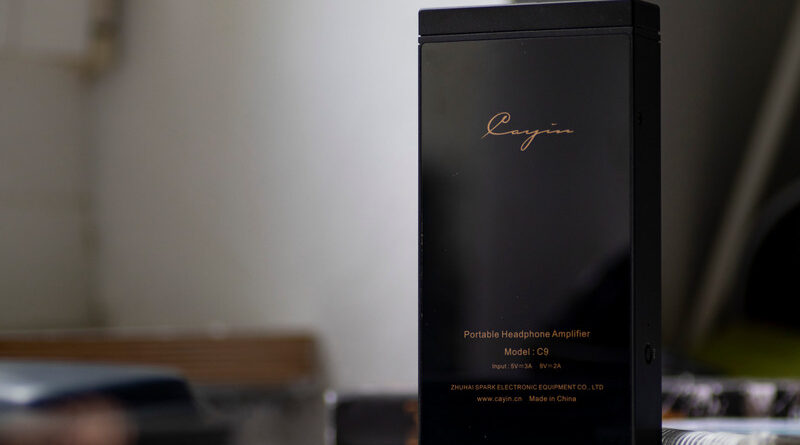





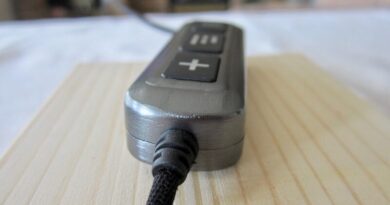
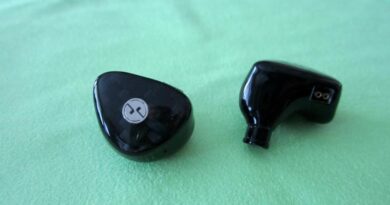
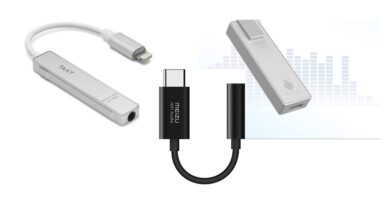
Pingback: Cayin C9 Portable Amplifier Review - GearOpen.com
Excellent review.
Although I initially bought the Cayin C9 as the ‘best of the transportable AMP’ options with Korg NuTubes, the solid state implementation of the C9 is actually it’s strength. The NuTubes just take the edge out of the detail, treble and colours the sound. Sure, it’s a more relaxed, warmer presentation but at the expense of detail and clarity.
It was designed to drive IEM’s and open up the soundstage. And to that end it works beautifully with the Oriolus Trailii. Driving the Utopia (Astell and Kern SP2000 -> Cayin C9 -> Class A / SS) with a Danacable Lazuli Reference Plus balanced cable. I’m not left wanting. The C9 shines when paired with top end DAP or headphones. It may not have the dynamics of the Naim Uniti Headphone Edition or a dedicated desktop amplifier but you’ll be splitting hairs to say it’s not summit-fi sound for a transportable solution.
Excellent review again. Thank you.